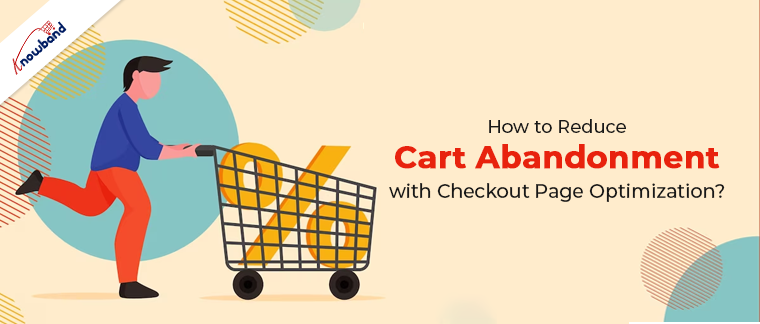Cart abandonment is a serious issue for online merchants. It refers to the phenomenon where customers add items to their shopping carts but leave the website without completing the purchase. High cart abandonment rates can significantly impact an e-commerce business’s revenue and profitability.
However, by implementing effective checkout page optimization techniques, businesses can minimize cart abandonment and increase conversion rates. In this blog post, we will explore strategies to reduce cart abandonment through checkout page optimization.

1. Streamline the Checkout Process
One of the primary reasons for cart abandonment is the complicated and lengthy checkout process. Customers prefer a quick and hassle-free experience when making a purchase. By streamlining the checkout process, you can significantly reduce friction and encourage customers to complete their transactions.
Remove any unnecessary steps and minimize form fields to reduce the time and effort required to complete the purchase. Implement a guest checkout option to eliminate the need for customers to create an account, as this can act as a deterrent. Offering multiple payment options, such as credit cards, digital wallets, and alternative payment methods, further enhances convenience and encourages customers to proceed with their purchases.
2. Optimize the Design and Layout
The design and layout of your checkout page play a crucial role in keeping customers engaged and guiding them toward completing the purchase. Ensure that your checkout page design is clean, uncluttered, and visually appealing. Use a consistent color scheme, legible fonts, and clear call-to-action buttons to guide customers through the process.
Display the progress indicators to show customers how far they are in the checkout process, providing a sense of control and reducing anxiety. Implement a responsive design that adapts to different devices, ensuring a seamless experience for customers using smartphones, tablets, or desktops.
3. Build Trust and Security
Trust and security concerns are major factors that lead to cart abandonment. Customers need assurance that their personal and financial information will be protected during the checkout process. Implement security measures such as SSL certificates and display trust badges to instill confidence in your customers.
Clearly communicate your privacy policy, refund policy, and any security measures you have in place. Incorporate testimonials, reviews, and ratings to showcase social proof and build trust. Providing a secure and transparent checkout experience will alleviate customer concerns and increase the likelihood of completing the purchase.
4. Offer Clear and Transparent Pricing
Unexpected costs and fees at the checkout stage are significant contributors to cart abandonment. To reduce surprises and improve transparency, display all costs, including taxes, shipping fees, and any additional charges, upfront and clearly on the checkout page. Avoid adding any hidden fees during the final stages of the transaction.
Consider offering free shipping or discounts for reaching a minimum purchase threshold to incentivize customers and increase the perceived value of their purchase. Being transparent about pricing from the beginning helps build trust and reduces the likelihood of customers abandoning their carts due to unexpected costs.
5. Provide Real-Time Support and Assistance

During the checkout process, customers may have questions or encounter issues that can hinder their progress. Offering real-time support and assistance options can help overcome these obstacles and increase the chances of completing the purchase.
Implement live chat support, prominently display customer service contact information, or offer a chatbot feature to address common queries and provide immediate assistance. Promptly responding to customer inquiries and providing guidance throughout the checkout process helps alleviate concerns and builds customer confidence.
Conclusion
Reducing cart abandonment is crucial for maximizing e-commerce revenue. By implementing effective checkout page optimization strategies, businesses can minimize friction, build trust, and streamline the purchase process. Streamlining the checkout process, optimizing the design, building trust, offering transparent pricing, and providing real-time support are key steps to minimize cart abandonment and improve conversion rates.
Remember, a well-optimized checkout page is a continuous effort that requires monitoring and improvement based



